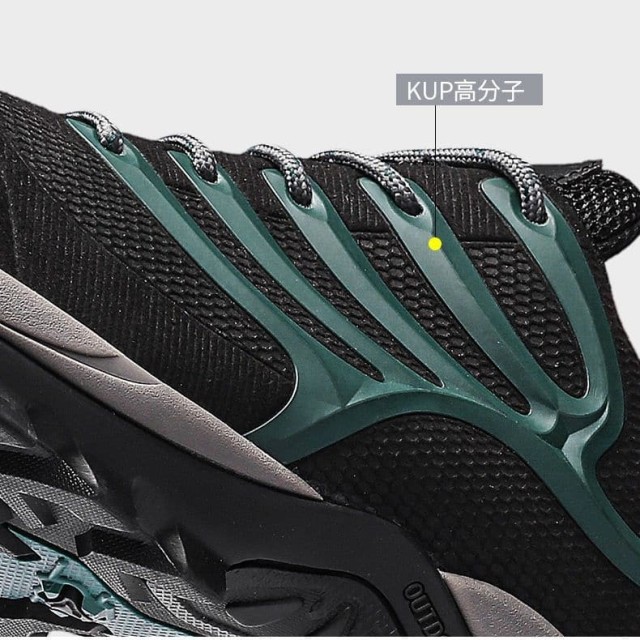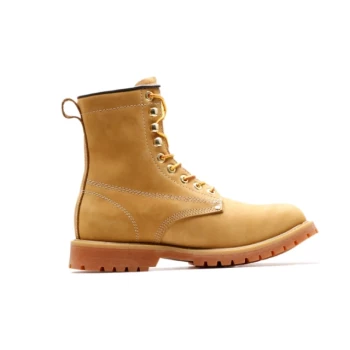Choosing the right work boots isn't just about durability—it's about matching heel design to your job's physical demands. The wrong heel can lead to fatigue, instability, or even workplace accidents. Here's how to select the optimal heel type for your work environment.
Choosing the Right Heel for Your Job
Tapered Heels: Agility for Dynamic Tasks
Ideal for: Electricians, roofers, or anyone frequently climbing ladders or navigating uneven terrain.
- Why they work: The angled cut reduces surface contact, allowing quicker pivots and better grip on narrow surfaces.
- Performance benefit: Research shows tapered heels improve mobility for tasks requiring rapid directional changes.
- Safety note: Not recommended for heavy load-carrying due to reduced stability.
Have you noticed how boot agility affects your reaction time in high-movement jobs?
Underslung Heels: Balance and Reduced Fatigue
Ideal for: Oilfield workers, warehouse staff, or roles requiring 10+ hours of standing.
- Ergonomic advantage: The curved design shifts weight forward, reducing lower back strain. Studies link this design to roughly 20% less reported fatigue in 12-hour shifts.
- Hidden feature: Many underslung heels integrate shock-absorbing midsoles—a key factor in preventing long-term joint damage.
- Real-world impact: Workers in food processing plants report fewer slips when paired with oil-resistant outsoles.
Block Heels: Stability for Heavy-Duty Work
Ideal for: Construction laborers, loggers, or anyone handling heavy materials.
- Weight distribution: The flat, wide base increases surface contact by approximately 30% compared to tapered designs.
- Material matters: Composite block heels outperform steel in cold environments, maintaining flexibility below freezing.
- Unexpected perk: The design naturally resists mud buildup—a common hazard in excavation work.
Key Factors Beyond Heel Type
Heel Height and Occupational Safety Standards
- Regulatory insight: Most industries mandate heels under 2 inches to prevent ankle rolls. Exceptions exist for specialized roles like linemen.
- Hidden risk: Taller heels alter posture, increasing fall risks on slick surfaces—a leading cause of warehouse injuries.
- Pro tip: Look for ASTM F2413-18 certification, which tests heel compression resistance.
Material Durability in Harsh Environments
- Chemical exposure: Oilfield boots require heels made from hydrocarbon-resistant compounds that won't degrade after contact with drilling fluids.
-
Temperature extremes:
- Cold climates: Thermoplastic polyurethane (TPU) heels remain flexible down to -40°F.
- High heat: Vulcanized rubber resists melting near furnaces or molten material zones.
- Longevity hack: Boots with replaceable heel caps extend footwear life by 2-3x in abrasive conditions like mining.
Ready to Equip Your Team With Job-Specific Footwear?
3515 manufactures precision-engineered work boots tailored to your industry's demands. From underslung heels for fatigue reduction to chemical-resistant block heels, our bulk production capabilities ensure your workforce gets the right support—without compromising safety. [Contact our specialists] for volume pricing on boots designed to outperform.
Because the right heel doesn't just support your body—it supports your bottom line.
Related Products
- Wholesale Slip-On Safety Boots Manufacturer - Custom Puncture-Proof & Steel Toe
- Wholesale Durable Safety Boots | Custom Steel Toe & Puncture-Resistant Manufacturing
- Custom Wholesale Leather Safety Boots Direct Factory Manufacturing
- Durable Steel Toe Safety Boots Wholesale & Custom Manufacturing
- Wholesale Safety Footwear Manufacturer for Bulk & Custom OEM Orders
Related Articles
- How to Choose Between Steel and Composite Toe Boots for Maximum Safety
- How Steel Toe Boots Combine Safety Compliance with All-Day Comfort
- How to Choose Safety Footwear for Electrical Hazard Jobs: Steel Toe vs. Composite Toe
- Matching Men’s Work Shoe Safety Technologies to Workplace Hazards
- How Safety Standards for Steel Toe Boots Protect Workers Beyond Impact Resistance



















